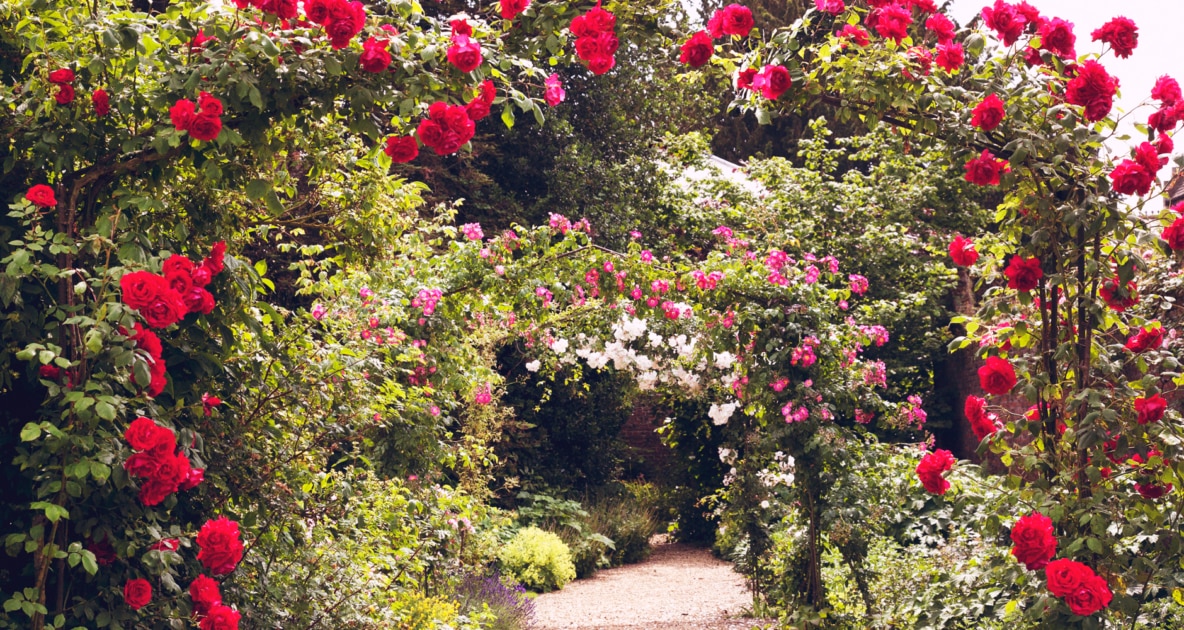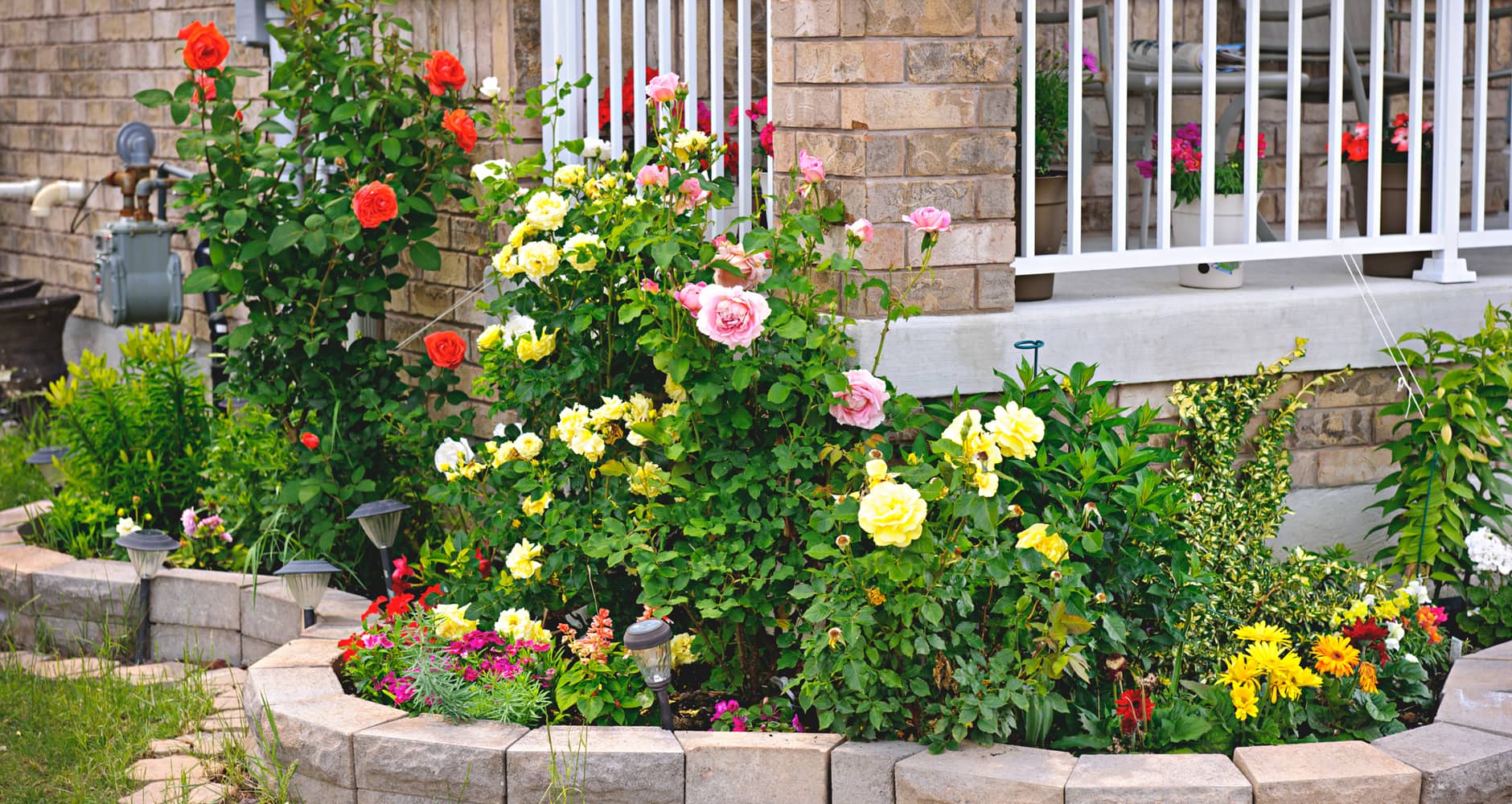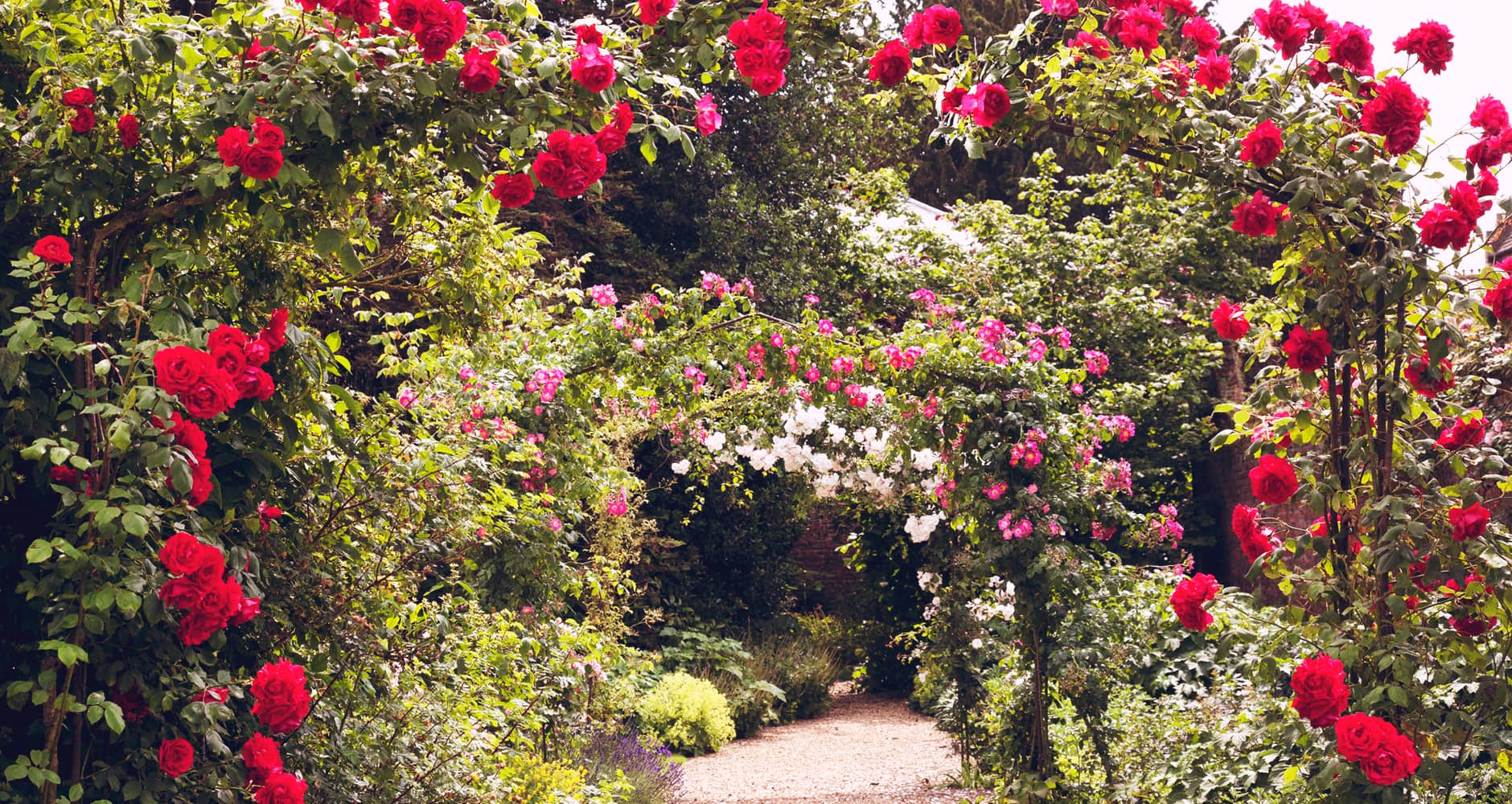Grow Roses Like A Pro (Even If You’re Not One)!
Think you need to be a seasoned green thumb when it comes to caring for and tending rose bushes? Our tips can help anyone grow magnificent, fragrant blooms that are the envy of the neighborhood. Learn how!

Think you need to be a seasoned green thumb when it comes to caring for and tending rose bushes? Not so! With the right tools and knowledge, you can have fragrant blooms that are the envy of the neighborhood. And why not plant fragrant varieties near the windows and doors so you can enjoy the sweet fragrance indoors? Here are a few tips to help you along.
Rose Styles and Varieties—Which One Is Right For You?
Rose bushes are available in a variety of colors. Some cultivars, like Joseph’s Coat, are multi-colored and said to be like owning three roses in one due to the variety of colors displayed in the blooming process. Choose colors that accent your home, or simply your favorites.
Climbing and rambling roses are many gardeners’ favorite choice for vertical plantings as they are easy to train to grow up trellises, walls and other supports. Simply drape and tack wire, rope or cord around a window or door frame, so the climbing roses will grow and beautifully accent the architecture of your home. You can also showcase climbing roses by planting them to grow up any of these country props for vertical interest: twig arches, rustic wood ladders, a birdhouse on a post, or a farm bell mounted on a post—get creative!
For formal settings, flank the entrance to your home with a pair of rose trees, or go “Downton Abbey” style and plant a formal English or tea rose garden. Want a place to repose outdoors? Create a climbing rose-covered arbor, gazebo, arch, trellis, or iron fence and railing. The possibilities are endless.
6 Basic Garden Rose Varieties
Hybrid Tea roses are the benchmark of roses for their large, perfectly formed, elegant flowers and their perfumed scent. Roses form singly on long stems, with little foliage at the base of the plant. Typically they grow between four and five feet tall.
Floribunda roses grow in showy clusters instead of one flower per stem on bushes and are considered to be a hardier, disease resistant variety than hybrid tea roses. They are covered with blooms from top to bottom with no bare spots, making it a favorite garden feature. Cultivars vary in size, from compact and low-growing, to hedges reaching heights of five to six feet.
Grandiflora is a hardy and disease-resistant variety with elegant blooms similar to hybrid tea roses. It grows to a taller height and is well-suited for hedges and background plantings in flowerbeds. It generally grows between eight to ten feet tall.
English roses grow as a shrub and can vary greatly in height, depending on which cultivar you select. Its flowers have lots of lush, fragrant petals. The blooms are similar to antique garden roses from days gone by, with a rich fragrance reminiscent of old-fashioned tea roses.
Wild or species roses are known to have been growing wild for hundreds or thousands of years, especially in rural settings. Wild roses usually bloom in spring. They have shallow roots, making them easy to dig up and transplant in the home garden within the same growing zone. The canes grow quite lengthy, often arching.
Climbing roses grow long vertical canes that easily take hold of its support and thus are often planted to grow up arbors, trellises, fences, gazebos, and other outdoor features. Most cultivars are variations of bush-type varieties. Depending on the cultivar chosen, climbing roses can grow in clustered blooms like the floribunda or produce a large single flower to a stem like the hybrid teas.
General Planting and Care Tips for Roses
- When selecting a planting site, keep in mind that roses need to receive 4 to 6 hours of direct sunlight a day during the growing season. To plant roses near a wall, arbor, post or trellis, leave a space of about 18” inches between the plant and the wall, etc.
- The soil should be well drained, never muddy. Climbers, miniatures, and rose trees can be grown in large containers with ample drainage holes. When growing roses in containers do not set the pot on a saucer that could collect water. Roses will not thrive with “wet feet.”
- The ideal soil is lightly acidic, with a pH level between 5.6 and 6.5.
- To plant a rose bush, dig a hole that is as deep as the plant’s soil ball and about three times as wide.
- Just before placing a rose bush in its newly dug hole pour in some water, and add fertilizer to ensure that the moisture reaches the root system and your rose has the nutrients it needs to start growing.
- Some climbing roses grow quite large, so it is important to choose a variety that your trellis, arch or post can handle. When planting a climbing rose bush, instead of setting it upright in the center of the hole as you would do for all other roses, set it in the hole at a 45-degree angle, allowing the canes to lean toward the support. If the plant canes are too short to touch the wall, trellis or other support, push a stake into the ground and tie the stake to the trellis. Using stretch tape, attach the rose to the stake to train the canes to grow from the stake to the support. Once the canes are established and growing on the support, the stake can be removed.
- Fertilizer should be applied in early spring and every six weeks from that point on until summer’s end.
- As a general rule, newly planted roses should not be pruned. The foliage it forms will provide the necessary energy, through photosynthesis, for the root system and the plant shoots to get off to a strong start.
- Prune established, mature roses in the coolest months that freezing weather does not occur.
- Mulch adds nutrients to the soil, keeps down weeds, and retains moisture during hot weather. Pine straw is the ideal mulch for roses and other acidic plants. Mulch before summer and before winter weather to protect your plants.
- Newly planted roses should be watered two to three times a week. Always water the soil, not the leaves. Never water after sunset, to discourage black spot disease from forming.
Got aphids on your roses? Here’s how to get rid of them.
Cure for Black Spot:
Be sure you check out our Gardening by the Moon calendar here!

Deborah Tukua
Deborah Tukua is a natural living, healthy lifestyle writer and author of 7 non-fiction books, including Pearls of Garden Wisdom: Time-Saving Tips and Techniques from a Country Home, Pearls of Country Wisdom: Hints from a Small Town on Keeping Garden and Home, and Naturally Sweet Blender Treats. Tukua has been a writer for the Farmers' Almanac since 2004.








Do you recommend a schedule for spraying roses for black spot, mildew, aphids/thrips? If so, what chemicals should be used and what time of day should the spraying occur to prevent bees from getting sprayed?
Hi Darlene, we just added a helpful video on blackspot to the post (but here’s the link): https://www.youtube.com/watch?v=G1K2LYuOnGA
And here’s a link to getting rid of aphids: https://www.farmersalmanac.com/get-rid-of-aphids-35552
HOW WOULD I TRANSPLANT ROSE CUTTINGS? WHEN IS IT TIME TO DO THIS? JUST WONDERING THX
I was told to prune just before the leave stem that has five branches or leave on it. I’ve never heard of second leaf. What is that?
I want to move my rose bush, is there a certain time to do this, and a certain time of the year?
Hi Sandra, you can check our gardening calendar here: https://www.farmersalmanac.com/calendar/gardening and you can also check out this web site which has some good info: http://www.rosemagazine.com/pages/pruning.asp
Hi we just had a flood like rain. My rose bush was pretty and the blooms were white. Today the roses are yellow and gross. Help how do I get them pretty again?
why do my leaves turn yellow.
my rose bush will not flower any thoughts?
Is it me? But are tips 8 and 9 contradictory? Prune or don’t prune?
Hi Luise, thank you for pointing that out. We have contacted the author and made the following corrections: 8. As a general rule, newly planted roses should not be pruned. The foliage it forms will provide necessary energy, through photosynthesis, for the root system and the plant shoots to get off to a strong start.
9. Prune established, mature roses in the coolest months that freezing weather does not occur.
Can you demonstrate what is the second leaf to be pruned?
Can these rules apply to Caribbean tropical countries where humidity and temperatures are quite high?
If you are in the humid Southeast, don’t forget – spray, spray, and spray some more! Hybrid teas are growable only as annuals in my part of the South unless you commit to spraying fungicide, mildewcide, and insectcides throughout the spring and summer, AND cleaning up every single leaf and flower petal as they fall.
Grandifloras and the new style English roses are only slightly better. In my locale, if you want to be chemical free, stick with floribundas, some species roses, and a variety of the “old” roses if you want them to last more than one or two years. New Dawn in the bush and climbing version is great, two flushes of blossoms during the year, great apple blossom fragrance, shrugs off mildews and wilts.
Just my opinion.
also remember to remove dead blooms by cutting to the second leaf on stem to help promote further blooms.